MXA MOTOCROSS RACE TEST: 2018 KAWASAKI KX250F
Q: FIRST AND FOREMOST, IS THE 2018 KAWASAKI KX250F BETTER THAN THE 2017 KX250F?
A: With last year’s overhaul of the 2017 KX250F, it has a much better chassis than the previous generation; however, the 2017 engine was gutless. It was a boring engine that lacked its previous midrange punch. In 2017 we longed for the excitement of the old powerband, which we had declared our love for many times. It wasn’t that the 2017 KX250F made less horsepower, as it actually had 0.17 ponies more for 2017, but the power started out slow, was too linear and was flat on top. We found it boring. Surprisingly, given that the 2017 KX250F was a total remake, Kawasaki was able to free up the cash to revamp the 2017 powerplant. The engineers went looking for the magic they had back in 2016—and they delivered more power from bottom to mid and more over-rev on top. That alone makes the 2018 KX250F better than the 2017 KX250F.
Kawasaki focused on refining the engine for 2018. The rest of the bike, save for the suspension settings, remained the same.Q: WHAT HAS KAWASAKI CHANGED ON THE KX250F FOR 2018?
A: The 2018 KX250F is only in the second year of its four-year production cycle. That would normally mean that an all-new KX250F wouldn’t be coming down the pike until 2020; however, the 2017 KX250F had a few flaws that needed to be addressed, and Kawasaki took the initiative to refine the engine for 2018.
(1) Throttle body. The 43mm throttle-body injector angle has been changed from 45 degrees to 30 degrees. The injector also offers a new spray pattern, which Kawasaki believes creates improved atomization of the fuel.
(2) Fuel pump. The fuel pump has 17 percent more pumping pressure over the 2017 fuel pump.
(3) Intake. The intake tract has been shortened 20mm.
(4) Cylinder head. The 2018 cylinder head is the 2017 head with a new intake port divider. The divider has been doubled in length through the intake tract to help keep the air speed in laminar flow longer.
(5) Camshaft. The camshaft is new, and the timing has been advanced from 110 degrees to 106 degrees.
(6) ECU. The ECU settings have been revised. The three couplers that come with the bike (lean, rich and stock) are mapped differently from last year.
(7) Exhaust. The head pipe has a 3mm-larger diameter and is 30mm longer. The resonance chamber has been slimmed down.
(8) Forks. The Showa SFF Type 2 forks have a softer 9.4 N/m spring (down from 9.8 N/m in 2017). Preload on the lighter fork spring has been increased. On the damper side, the rebound, compression and BCV shim settings have been revised.
(9) Shock. The Showa shock also has new rebound settings, a new plug bolt and new compression shim settings.
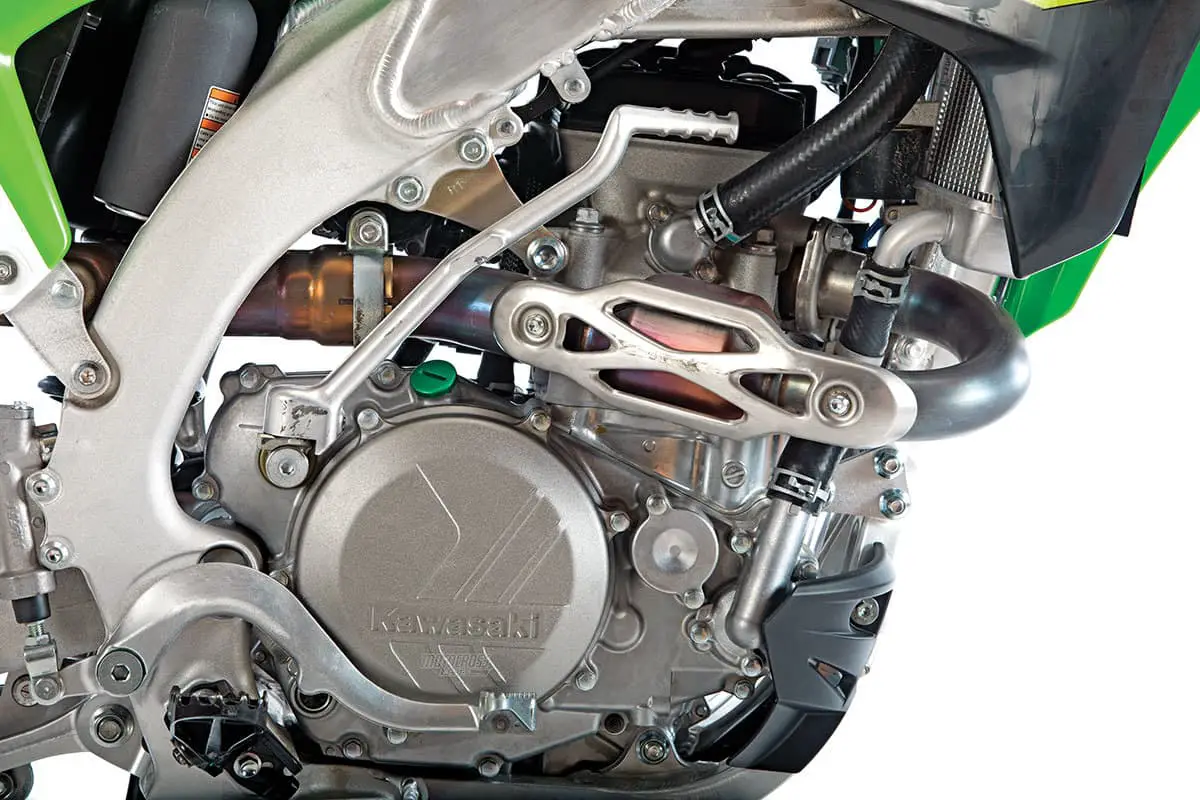
Q: HOW DO THE ENGINE CHANGES AFFECT THE POWERBAND?
A: It’s no secret that we were saddened to see the 2016 KX250F engine go last year. It was a playful engine that had an explosive midrange hit that every test rider loved. It was arguably the best engine in the 250 class, but the bike got docked points for its outdated chassis. We described last year’s updated 2017 KX250F engine as “deceiving.” Initially, the bike felt slow, even though it created the same horsepower as the year prior. The power was just delivered so differently that it had no Kawasaki DNA. It was very linear, and the midrange meat had been trimmed down. This made the powerband feel boring; however, on the plus side, the power tracked to the ground incredibly well. And, after getting familiar with the 2017 KX250F engine, testers admitted they could go as fast with the 2017 engine as they could with the thrill-ride 2016 engine. But, and this is a big but, even with 40 horsepower, it was giving up 4 horses to the KTM 250SXF and Husqvarna FC250.
In a deja-vu moment, our first impression of the 2018 KX250F engine was a yawn. We yearned for more power off the bottom when coming out of corners. It had been improved from last year, but it was nothing to write home about. The test riders’ left feet were getting tired from having to shift so much. Instead of downshifting once in a corner, we had to downshift twice or the low-end power would bog us down.
All was not lost. We knew from experience that mapping makes a big difference on Kawasakis. In stock trim, the KX250F comes with three different plug-in maps to choose from. Green is stock, black is rich and white is lean. The rich coupler mellows the power, and the only time we would consider mellowing out the KX250F power would be in wet or slick conditions. The lean coupler is the aggressive map. This map livened up the bottom end significantly. No more having to downshift twice into corners. The power would pull a higher gear through the corners without us having to abuse the clutch; however, while this map set the world on fire from low to mid, the top-end pull was shorter and signed off sooner. With the white coupler, we had to short-shift to stay where the power was. Deep dirt would drag the rpm down, which meant that the following gear was always a step up to more power (until the rpm climbed into the meat of the power). On a side note: Many 2018 Kawasaki KX250F owners have complained about a bad deceleration pop. Our solution for a broader powerband and an end to the lean pop was a custom map.

Q: HOW OUR MAP CAN GET THE MOST OUT OF YOUR 2018 KX250F
A: With the stock map (green coupler), we got the top end and over-rev we wanted. With the aggressive map (white coupler), we got the bottom to midrange we wanted. Of course, what we really wanted was the best of both worlds. That would be the ultimate KX250F powerband. Was it possible? Yes, but not without spending $699.95 on the Kawasaki KX FI calibration tool (or bringing your bike to an authorized Kawasaki dealer who had the tool and the knowledge to use it).
This mapping tool is more complicated than the easy-to-use Yamaha GYTR Power Tuner or Yamaha’s 2018 Wi-Fi cell phone tuner. The KX FI calibration tool has 36 boxes for both fuel mixture and ignition timing. This tool offers more room for adjustment but requires a larger knowledge base to operate. Luckily, we did the work for you so you can just insert our numbers right in.
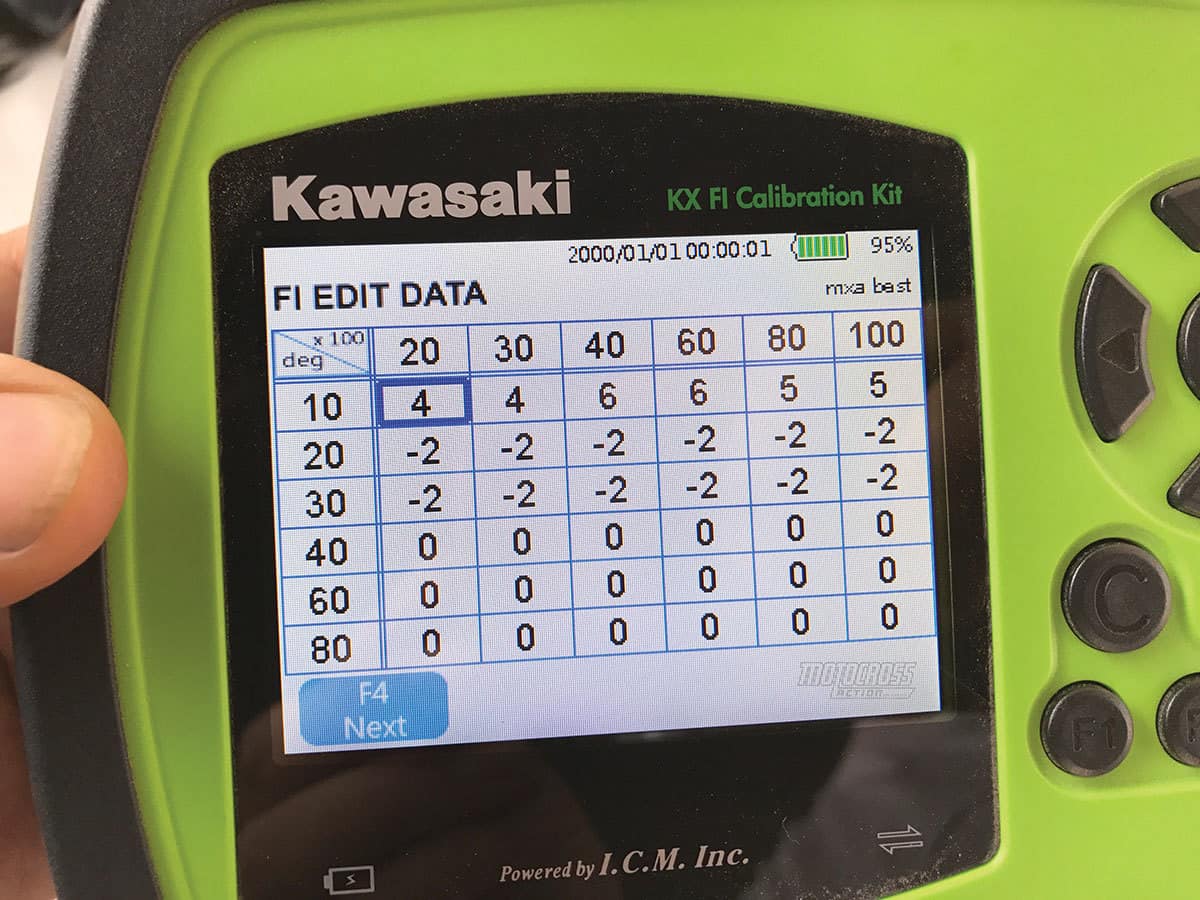
We started with the stock green map and didn’t touch any box past 40-percent throttle, as we liked the top end and rev of this map. Then, from 10- to 30-percent throttle, the ignition timing was advanced and the fuel mixture was leaned out. This map gave us the bottom-end power of the aggressive map and an excellent transition into the top-end power (with more over-rev). It didn’t make any gains in the midrange, but that was not a deal-breaker.
Q: WHAT IS THE BEST AFFORDABLE UPGRADE FOR THE KX250F?
A: You have heard us say this many times, and we will keep on saying it when it applies. Go up one tooth on the rear sprocket. If you are just a play rider or transitioning from a minicycle to a 250F, leave it stock. Going up from a 50- to 51-tooth rear sprocket will make the 2018 KX250F racier. You will have to shift more and will need greater precision with your right wrist, but, if you are a racer, we promise it is worth the compromise. There will be more oomph exiting corners, and it will get you to that next gear quicker.
Q: ARE THE SHOWA SUSPENSION COMPONENTS BETTER THAN LAST YEAR’S?
A: Last year’s chassis and suspension changes were a home run for Kawasaki. The 2016 chassis and suspension were outdated. The bike was unbalanced. This made accurate cornering a challenge. As a rule, the front end would tuck if you pressed too hard. The 2017 changes made the KX250F feel balanced, turn well and have a plush feel front to rear.
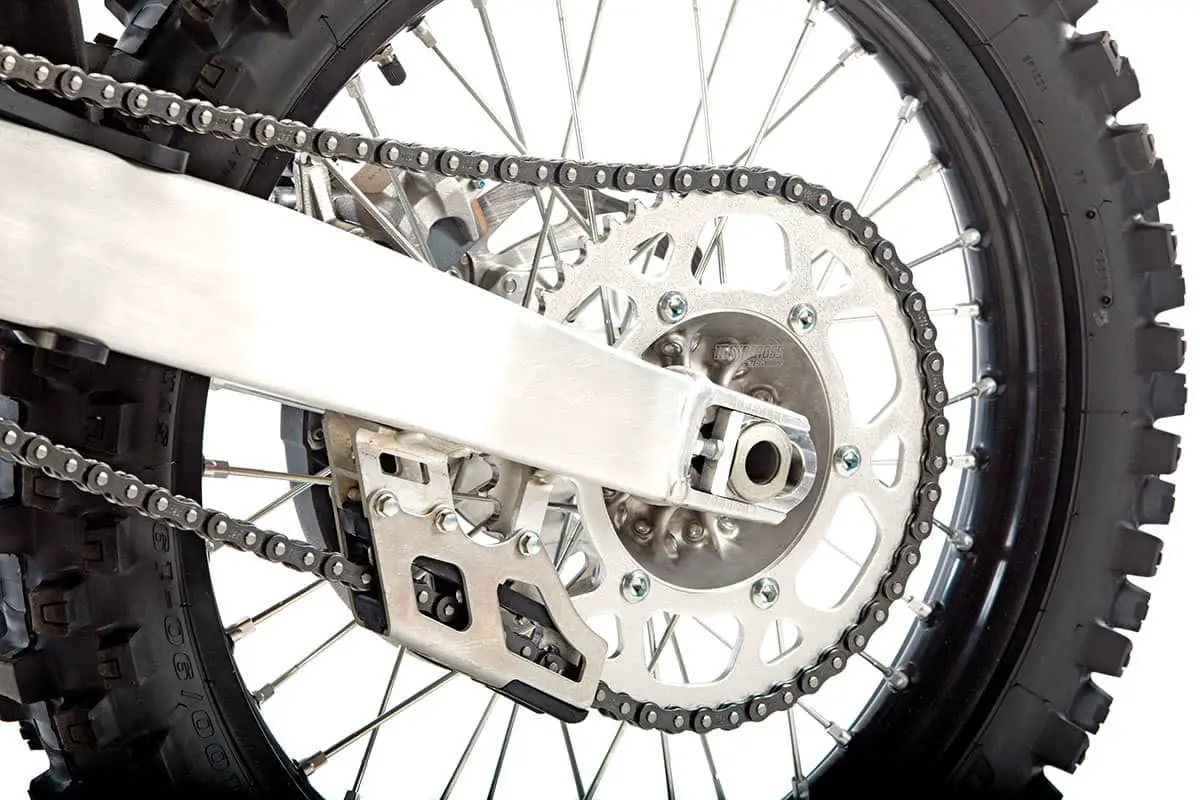
For 2018, the Showa SFF forks have a lighter 9.4 N/m spring (down from 9.8 N/m) with added preload. The valving has been changed as well. These changes make the forks ride higher in their stroke and have a stiffer overall feel. We liked that the forks didn’t dive as much as the 2017 forks—although getting past the mid-stroke of the fork was a challenge. This stiff part of the mid-stroke was precisely where the forks settled when you got on the brakes. It made the forks harsh, especially in braking bumps (when they should be at their supplest). We were never able to completely eliminate the harshness without taking preload out to soften up the forks. This allowed test riders to put more weight on the front end, allowing the bike to settle into corners. Heavier riders above 185 pounds will be on the cusp of bottoming. We have to say we liked the 2017 Showa SFF setting better, even though it had more movement.
The updated settings of the Showa shock allowed it to ride higher in the stroke. Last year the shock had a plush feel, but there was a lot of excess movement. That movement is now slowed down with the shock getting progressively stiffer. The test riders had no issues with the shock. We added more rebound and high-speed compression to slow the shock down a bit. Lighter riders went a few clicks softer on the compression, but other than that, the shock performed well.
Q: WHAT IS THE LEAST DURABLE PART ON THE BIKE?
A: We bet you were expecting us to say the chain guide. Wrong! That is now second on the list. Before the rear chain guide wore out, the clutch started to slip. We didn’t have much of an issue with this last year, but the added 3 horsepower from the bottom to midrange must put increased strain on the clutch. This is a nuisance. The cheapest solution is to use heavier clutch springs. If you never want to think about clutch problems again, we suggest installing a compete Hinson clutch. They are bullet-proof.
The second-least durable part remains, as always, the chain guide.
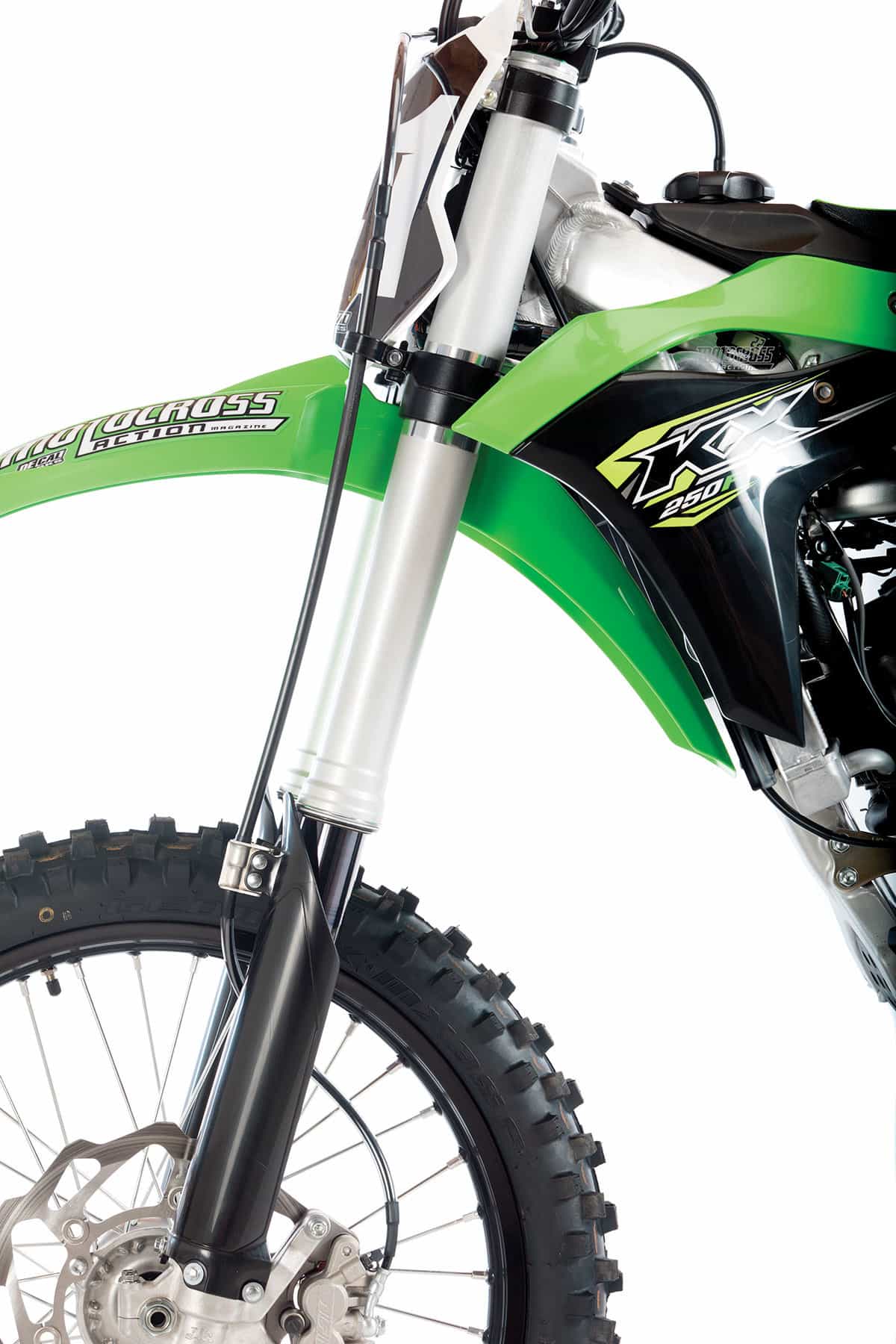
Q: WHAT DID WE HATE?
A: The hate list.
(1) Clutch. Everyone loves the silky-smooth feel of the KX250F clutch, but it doesn’t last.
(2) Chain guide. Every KX250F owner should have T.M. Designworks’ phone number on speed dial. Take our word for it; you will be calling this number: (541) 772-4161.
(3) Maps. We didn’t like any of the three maps that came with the bike. Plus, many of the KX250Fs had a bad decel pop. We had to make our own map, but it cured everything.
(4) Airbox. The right-side airbox vent is fake. Why? To help the KX250F pass AMA sound testing. Do you need to pass AMA sound testing? We don’t. The Pro Circuit team cuts out the right-side airbox vent and they pass every time.
(5) Launch control. To us, it seems more like a gimmick for a 250F engine. It just isn’t powerful enough to use.
(6) Forks. We loved these forks last year. Now, there is no getting around the harsh mid-stroke.
(7) Radiator shrouds. We caught the pointy end of the right radiator shroud in the cuff of our boot and it broke away.
Q: WHAT DID WE LIKE?
A: The like list.
(1) Engine. The engine is an improvement over last year. It has increased power where it needed it. Still, we don’t love it. It is just an average engine in comparison to its competition.
(2) Ergonomics. You feel at home on the bike. If you don’t, the pegs and bars are adjustable.
(3) Shock. This Showa shock does everything well.
(4) Tires. The KX250F comes standard with our favorite Dunlop MX3S tires.
(5) Weight. The KX250F is light. Last year it was the third-lightest bike behind the KTM 250SXF and FC250 at 221 pounds. They were, and remain, at 218 pounds

Q: WHAT DO WE THINK OF THE KX250F AS A COMPLETE PACKAGE?
A: For 2018, Kawasaki successfully addressed the lack of bottom and midrange power. The engine is much improved over last year; however, the mapping is an issue. We have included MXA’s map in this test to help you improve your bike’s powerband. The KX250F’s engine in stock trim is still no match for the KTM 250SXF or the FC250, but it is closing the gap on the YZ250F.
We love the thin chassis and the refined ergos of the bike. It is comfortable for just about anyone to ride. The suspension isn’t as easy to get along with as last year’s, but any top-tier suspension company can dial it in for you.
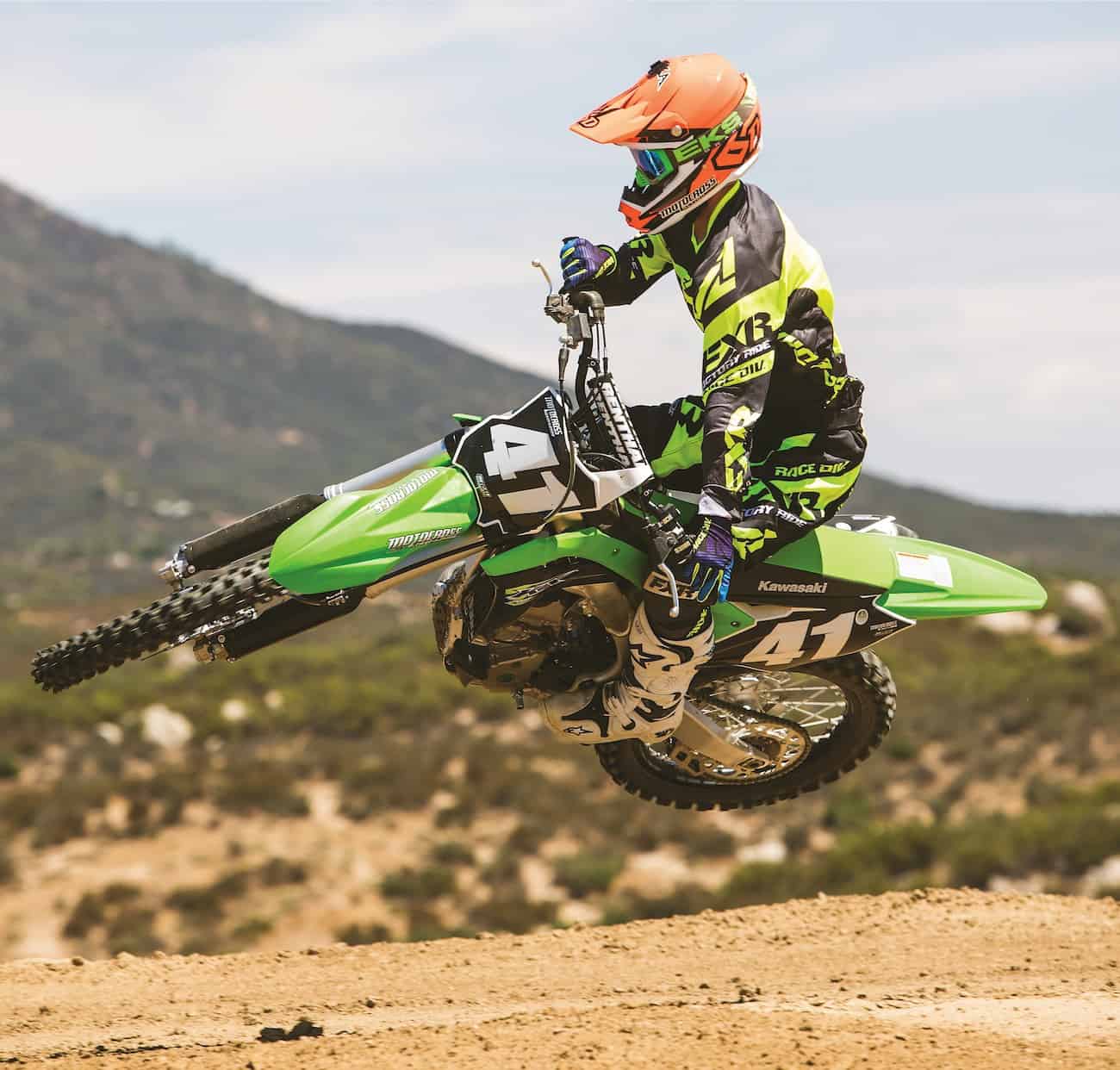 This chassis with the old engine would be an awesome bike.
This chassis with the old engine would be an awesome bike.
MXA’S 2018 KAWASAKI KX250F SETUP SPECS
This is how we set up our 2018 Kawasaki KX250F for racing. We offer it as a guide to help you find your own sweet spot.
SHOWA SFF TYPE 2 FORK SETTINGS
We’re happy these are Showa SFF coil-spring forks and not their complicated cousins, the SFF TAC air forks. We like that we can adjust the preload as well as the rebound and compression. This allows us to find the ride height we want rather than moving the forks up or down into the clamps. The spring rate is lowered to a 9.4 N/m spring (down from 9. 8N/m). To get the bike balanced, play with the preload adjuster. One click makes a big difference. For hardcore racing, we recommend this fork setup for the 2018 Kawasaki KX250F (stock specs are in parentheses):
Spring rate: 9.4 N/m
Preload: 6 clicks in (11 clicks in)
Compression: 18 clicks out (8 clicks out)
Rebound: 14 clicks out (16 clicks out)
Fork-leg height: Standard
Notes: There is a midrange harsh spot that you need to manage. We softened up the preload and compression to work through it.
SHOWA SHOCK SETTINGS
After we set the sag to the recommended 105mm, the stock settings were already in the ballpark. We went all over the map but still ended up close to the stock setting. Riders over 185 pounds will need to stiffen up the compression. For hardcore racing, we recommend this shock setup for the 2018 Kawasaki KX250F (stock specs are in parentheses):
Spring rate: 52 N/m
Race sag: 105mm
Hi-compression: 2-1/2 turns out (2-1/4)
Lo-compression: 10 clicks out (11 clicks out)
Rebound: 9 clicks out (12 clicks out)
Notes: The rear shock spring is too stiffer for the typical 140 pound KX250F racer. We switched to a 48 Nm spring for our smaller test riders and had the forks revalved and a light spring installed to make them more fluid through their stroke for lightweight racers.
 Had you subscribed to MXA, you would have read this complete bike test when in came out back in October. Click the box below to subscribe.
Had you subscribed to MXA, you would have read this complete bike test when in came out back in October. Click the box below to subscribe.



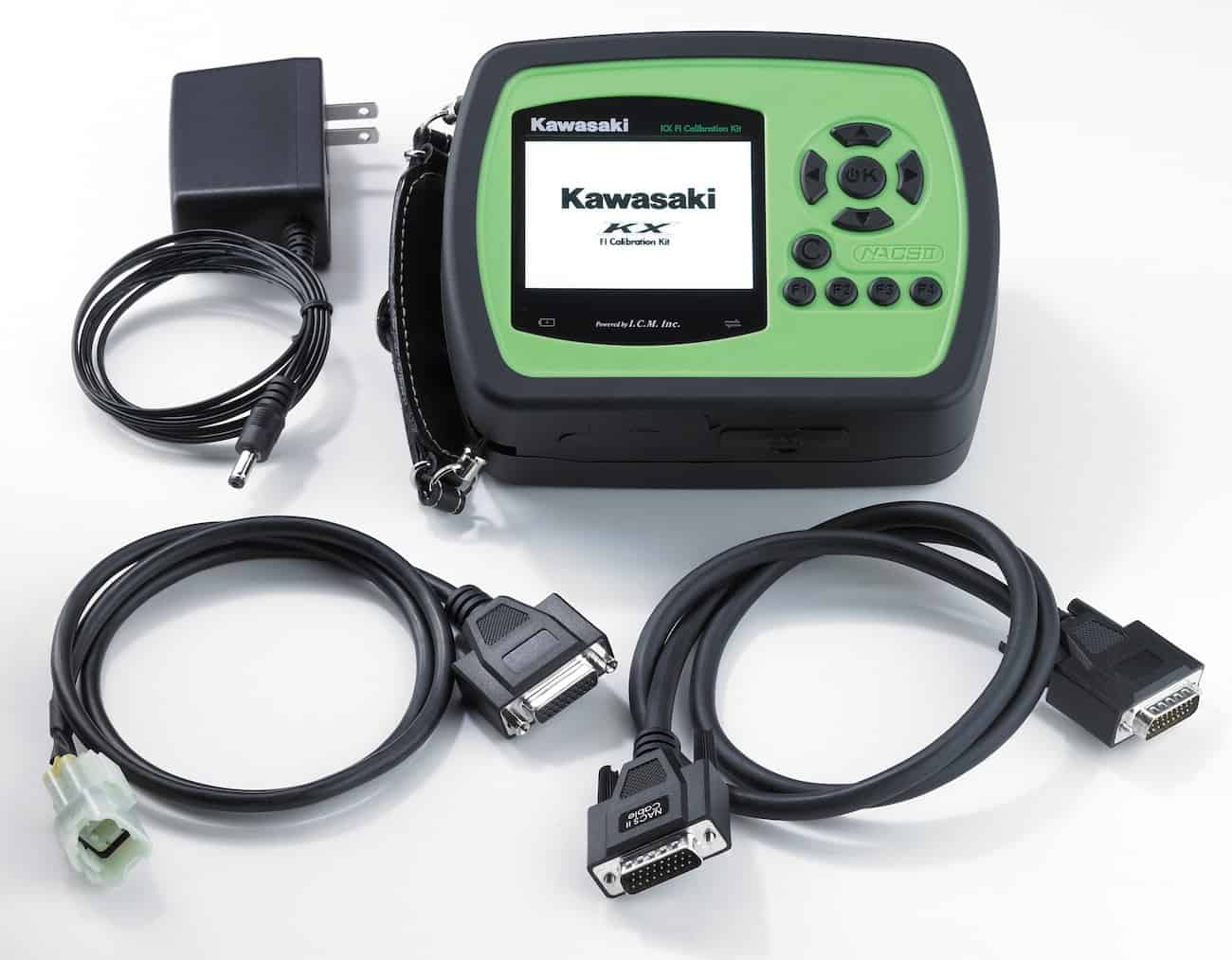




Comments are closed.